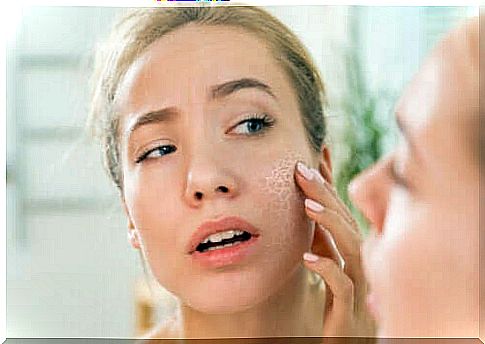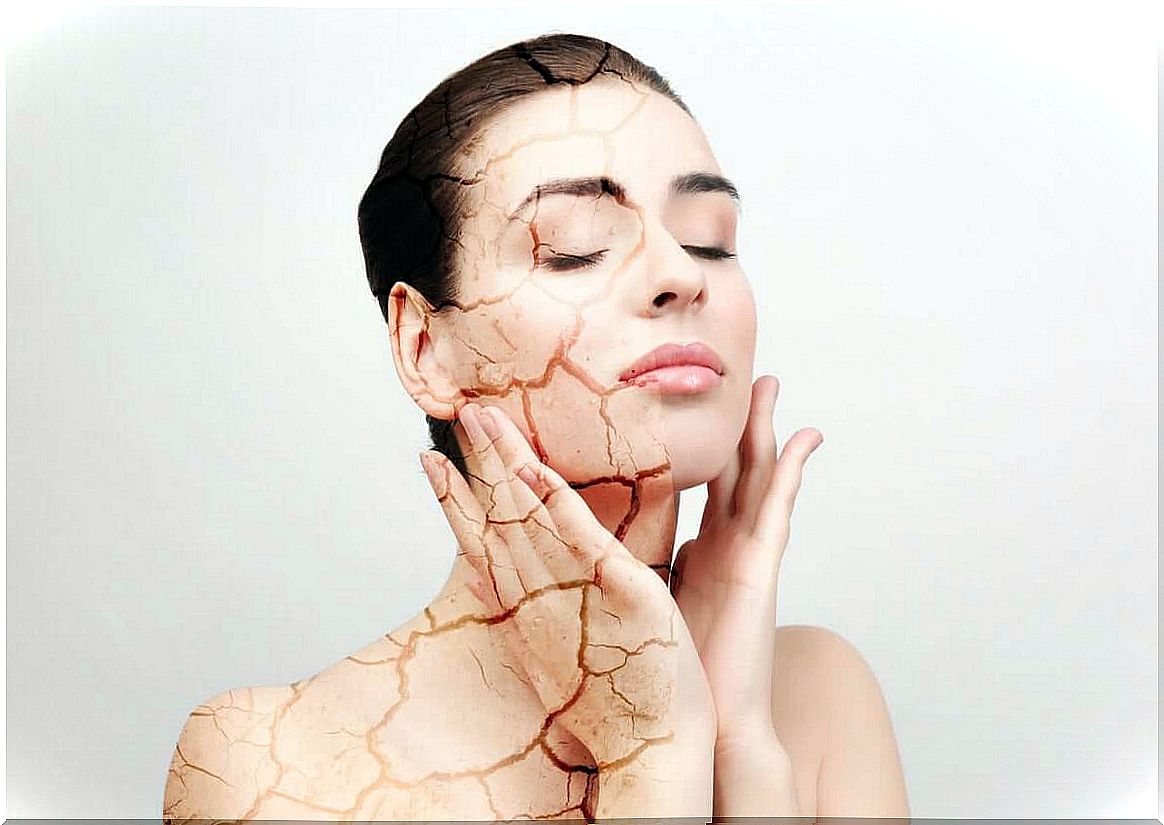Dry Skin: What Are The Causes
Dry skin is a common phenomenon in the population. Aging, cold or irritation from external influences can play a role as possible causes. Find out more here.

The skin disease commonly known as “dry skin”, the medical term xerosis, occurs in people of all ages and in different parts of the body. To stay healthy and supple, the skin needs a water content of 10 to 15%; therefore, lower values throw them off balance.
If the skin dries out, it reacts with itching, which can lead to open areas and a risk of infection. To counteract this, you can increase the humidity of the environment, use other washing and care products and use moisturizers to replace the lipids.
What is the appearance of dry skin?
Overly dry skin has clearly lost moisture and is therefore in an extremely dehydrated state. According to the American Academy of Dermatology (AAD), the signs and symptoms include :
- Dryness with cracks
- Moderate to severe itching
- Flaking
- Rough skin
- Redness of the skin
Any part of the body can be affected by dry skin; however, it most commonly occurs on the hands, arms, and legs. Providing the skin with the necessary moisture has both aesthetic and functional reasons, because this organ is exposed to a wide variety of influences in the human body.

Causes of Dry Skin
Dry skin is not uncommon; Millions of people suffer from it, be it from chronic or acute xerosis, whereby the latter can be triggered by various environmental influences, has its origin in skin care or age, or is due to illness.
Most of us have dry skin at some point in life. This can be justified by disposition or external influences. Below are the most common and well-known causes:
Dry skin due to illness
Diseases such as diabetes, thyroid dysfunction and kidney disease, contact dermatitis and atopic eczema cause extremely dry skin. These diseases affect the moisture balance of the cornea and dermis at various levels.
The main symptom of dry skin is itching, which is a consequence of dryness. It is therefore of fundamental importance to use moisturizing creams to preserve the protective layer of the skin of patients suffering from the diseases mentioned.
Depending on the weather
Living in a cold climate, especially in winter, in the interaction of the cold air outside with the dry heating air, means that the dermis is deprived of blood. Even hot and dry climates, where the heat and air conditioning evaporate the skin’s water, favors the skin drying out.
In these cases, showering should be reduced overall, and if so, then with lukewarm water. In addition, the skin should be moisturized after showering.
Excessive washing
Even those who wash too much and too often can dry out their skin. Many cleaning substances contain surfactants, which remove lipids from the skin surface and penetrate them intracellularly. This damages the protective skin layer in the medium term.
Accordingly, it is also destroyed when the skin is exposed to aggressive chemical products. The protective layer of fat dissolves and the aggressive substances penetrate deeper.
Dry skin from aging
Dry skin is more common with age. This is related to changes in keratin formation and the fat content of the cornea.
Older adults are more likely to have dry skin. With increasing age, the dermis produces less sebum, which is responsible for keeping the skin soft and young. Due to the reduced sebum production, the surface dries out faster and the skin is no longer as well protected against irritating external factors.
By the age of 40, sebum production drops dramatically, only to decrease in subsequent years, increasing the risk of dry skin. Even if xerosis is already a common phenomenon, it will be exacerbated by the progressive aging of society.
Smoke
Cigarettes contain harmful chemical substances that accelerate skin aging, which also becomes drier and drier, as already described in the previous paragraph.
Smokers tend to have dry and grayish facial skin and the typical wrinkles around the mouth. The cigarette lowers the collagen and elastin levels of the skin, which give the dermis its basic structure. This accelerates the aging process.
What is the pH of the skin and what influence does it have?
The top layer of skin has a pH value between 4 and 6. The value reflects the acidity of a substance. A pH value in this range indicates a slight acidity of the cell layer, which is due to the amino acids, the fatty acids and the sebum.
All of these ingredients are acids; and together they form a protective layer on the skin that fends off bacteria. In addition, the fat layer, which is made up of free fatty acids, cholesterol and ceramides, has a water-repellent function.
The majority of pathogenic bacteria are warded off by the pH value of a healthy skin surface. However, this protective shield loses its effectiveness when the skin is injured or dried out.
The lower skin layer has a physiological pH of 7.4, which favors the colonization of bacteria when the skin barriers do not work, as studies by the International Journal of Cosmetic Science show. Finally, dry skin can be a risk factor for infectious skin diseases.

Moisture for dry skin
Short baths with lukewarm water followed by creaming with moisturizing products are ideal for dry skin. Because after such a bath, the skin is more absorbent and can better absorb the care product, which helps to maintain the protective layer.
Itching is a classic symptom of dry skin. That is why you should recognize signs of dehydrated skin at the slightest itch and provide it with the necessary moisture.









